Hudds engineers win IMechE Railway Challenge
Wed, 03 Jul 2013 12:02:00 BST
Teams challenged with designing and building the “the best and most efficient, small-scale locomotive”
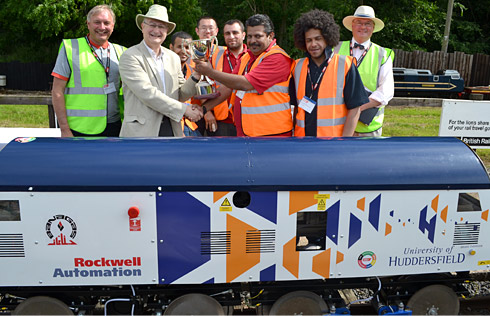
Pictured - Huddersfield team leader electrical engineer Siddiq Albusmait collecting the Railway Challenge 2013 trophy.
A team of Huddersfield locomotive engineers stormed the day at the Institution of Mechanical Engineering’s Railway Challenge, which was held at the Stapleford Miniature Railway near Melton Mowbray in Leicestershire.
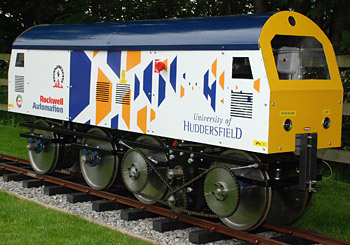 The Huddersfield team comprising 15 students studying on both mechanical and electrical engineering courses and they fought off challenges from student teams from Manchester Metropolitan University (second), the Interfleet Graduate team (third) and Birmingham University (fourth).
The Huddersfield team comprising 15 students studying on both mechanical and electrical engineering courses and they fought off challenges from student teams from Manchester Metropolitan University (second), the Interfleet Graduate team (third) and Birmingham University (fourth).
The challenge set to the teams was to design and manufacture “the best and most efficient, small-scale locomotive” by preparing a business case, finance, design and build all from scratch.
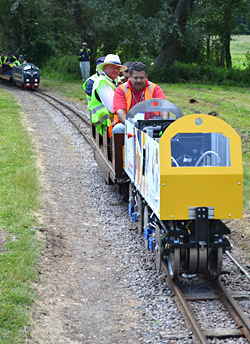 The competition adopted the same approach as a real-life tendering process to give participants a taste of an authentic business experience.
The competition adopted the same approach as a real-life tendering process to give participants a taste of an authentic business experience.
What the locomotives lacked in size they made up for in strength and durability with the competition rules stipulating that the engines had to be powerful enough to transport a 600 kilo load and one of the Railway Challenge judges.
The overall competition comprised five key areas; practical challenges considering energy storage, traction and ride comfort and these had to be combined with both a detailed design report and a sales presentation highlighting design, reliability, maintenance, cost and efficiency.
Huddersfield’s Institute of Railway Research Director Professor Simon Iwnicki attended the event with the Huddersfield students and was impressed with the high standards achieved by all the teams.
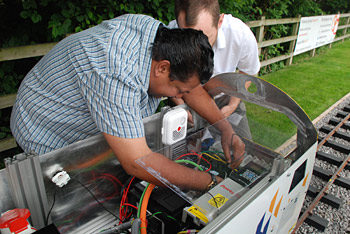 “The tasks set for the students were very hard indeed and would have challenged people who are already working in the industry,” said Professor Iwnicki. “For example, the energy storage system adopted by the Huddersfield team was very innovative. They chose to use a spring inside two rotating drums to store the energy and achieved forward and backwards motion using clutches engaged to the drums, which was a really innovative solution.”
“The tasks set for the students were very hard indeed and would have challenged people who are already working in the industry,” said Professor Iwnicki. “For example, the energy storage system adopted by the Huddersfield team was very innovative. They chose to use a spring inside two rotating drums to store the energy and achieved forward and backwards motion using clutches engaged to the drums, which was a really innovative solution.”
The Huddersfield team Project Manager was electrical engineer Siddiq Albusmait (pictured) and the team was praised by the judges for their excellent performances in the traction and ride comfort practical challenges and for the clear way they presented their design to the panel.
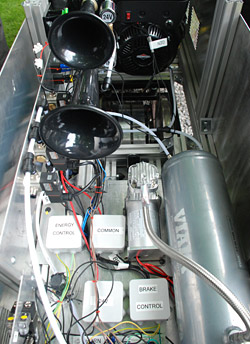 The locomotive featured a four-axle vehicle with a three phase AC traction package controlled by a digital frequency inverter and programmable logic controller supplied by international automation and control systems company Rockwell Automation. The team took it upon themselves to approach Rockwell and the University would like to thank the company for its support.
The locomotive featured a four-axle vehicle with a three phase AC traction package controlled by a digital frequency inverter and programmable logic controller supplied by international automation and control systems company Rockwell Automation. The team took it upon themselves to approach Rockwell and the University would like to thank the company for its support.
“There’s a real shortage of good railway engineers in the industry, which offers many interesting and challenging careers across a range of disciplines,” said Professor Iwnicki. “The IMechE is building on the success of the Formula Student competition, which is known worldwide, by offering a stimulating challenge in an attempt to engage more students in railway engineering. The Railway Challenge is also being welcomed by the industry, which sees the competition as a marvellous initiative to encourage young talent to the sector.”
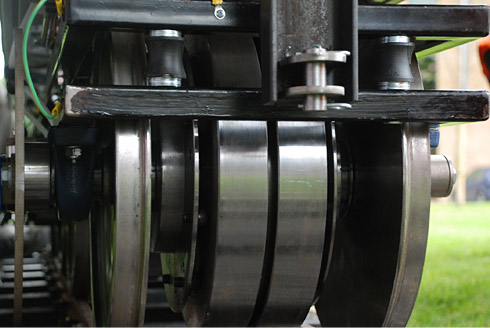
For energy storage, the Huddersfield team used a spring inside two rotating drums to store the energy and achieved forward and backwards motion using clutches engaged to the drums.
Search and comment using #RailwayChallenge or #hudawards







